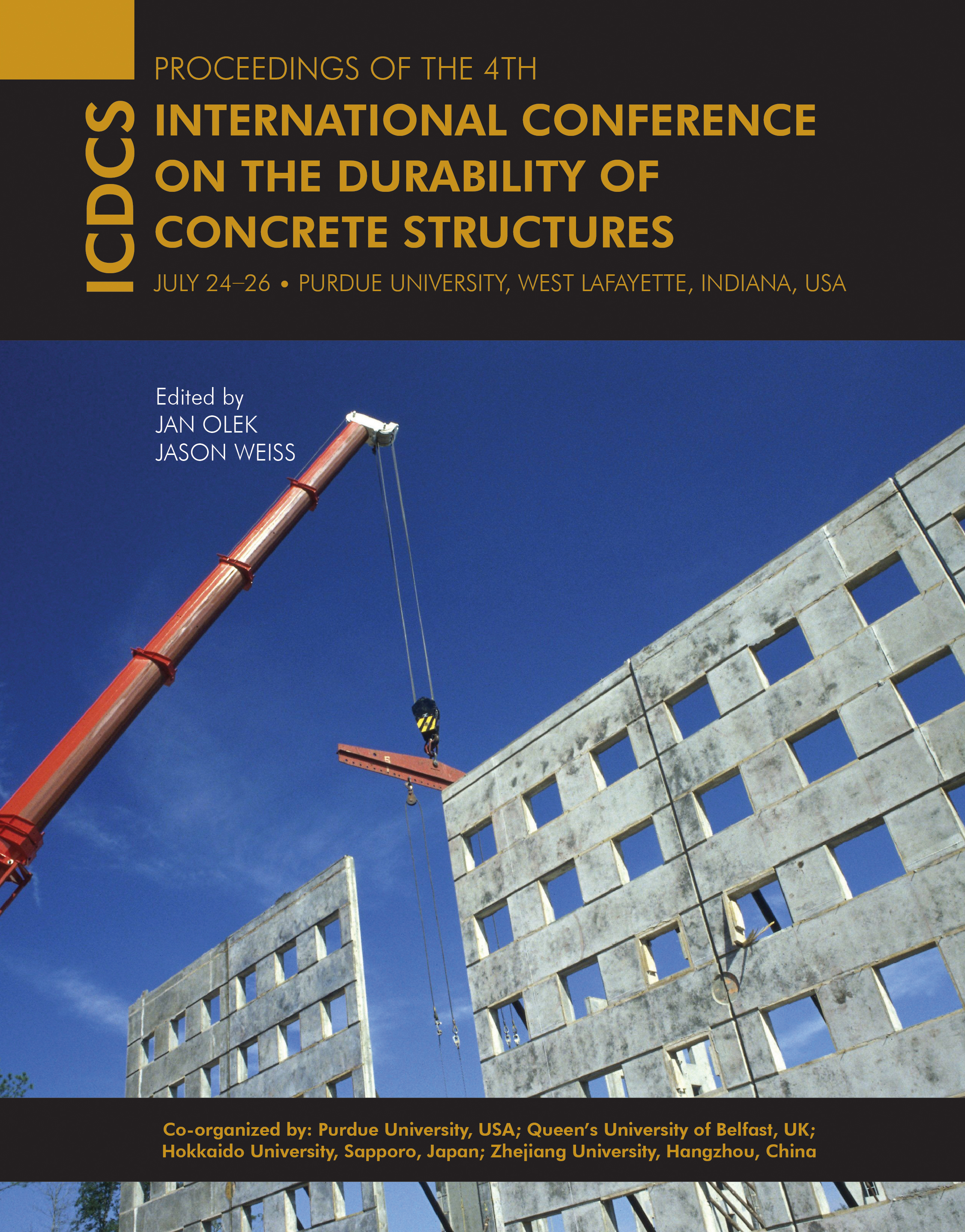Abstract
Corrosion-induced cracking is a widely existent issue for coastal infrastructure, which leads to its advanced failure. The monitoring of corrosion-induced cracking is an important means of evaluating its influence on structure normal use and safe operation. However, traditional sensors such as strain gage are unsuitable to embed into concrete and to record long-term strain of concrete caused by steel bar corrosion. The optical fiber sensor, Brillouin Optical Time Domain Analysis (BOTDA) can effectively avoid the undetected phenomenon existing in point-wise test method, and it has the characteristic of automated monitoring. The optical fiber sensor is also electrical insulation and anti-electromagnetic interference; so it is suitable for detecting the corrosion-induced cracks. In this article, experimental research on corrosion-induced crack monitoring based on BOTDA is introduced. The distributed optical fiber is embedded into concrete around the steel bar to record expansion force of concrete. An accelerated corrosion test is performed to investigate the relationship between tiny geometrical changes of steel bar and concrete expansion force. Different rates of corrosion current are applied to the specimen. The accelerated corrosion test approved that the optical fiber sensor can effectively monitor the whole process of corrosion-induced cracking.
DOI
10.5703/1288284315389
Included in
Experimental Research on Corrosion-Induced Cracking Monitoring Based on Optical Fiber Sensor
Corrosion-induced cracking is a widely existent issue for coastal infrastructure, which leads to its advanced failure. The monitoring of corrosion-induced cracking is an important means of evaluating its influence on structure normal use and safe operation. However, traditional sensors such as strain gage are unsuitable to embed into concrete and to record long-term strain of concrete caused by steel bar corrosion. The optical fiber sensor, Brillouin Optical Time Domain Analysis (BOTDA) can effectively avoid the undetected phenomenon existing in point-wise test method, and it has the characteristic of automated monitoring. The optical fiber sensor is also electrical insulation and anti-electromagnetic interference; so it is suitable for detecting the corrosion-induced cracks. In this article, experimental research on corrosion-induced crack monitoring based on BOTDA is introduced. The distributed optical fiber is embedded into concrete around the steel bar to record expansion force of concrete. An accelerated corrosion test is performed to investigate the relationship between tiny geometrical changes of steel bar and concrete expansion force. Different rates of corrosion current are applied to the specimen. The accelerated corrosion test approved that the optical fiber sensor can effectively monitor the whole process of corrosion-induced cracking.





